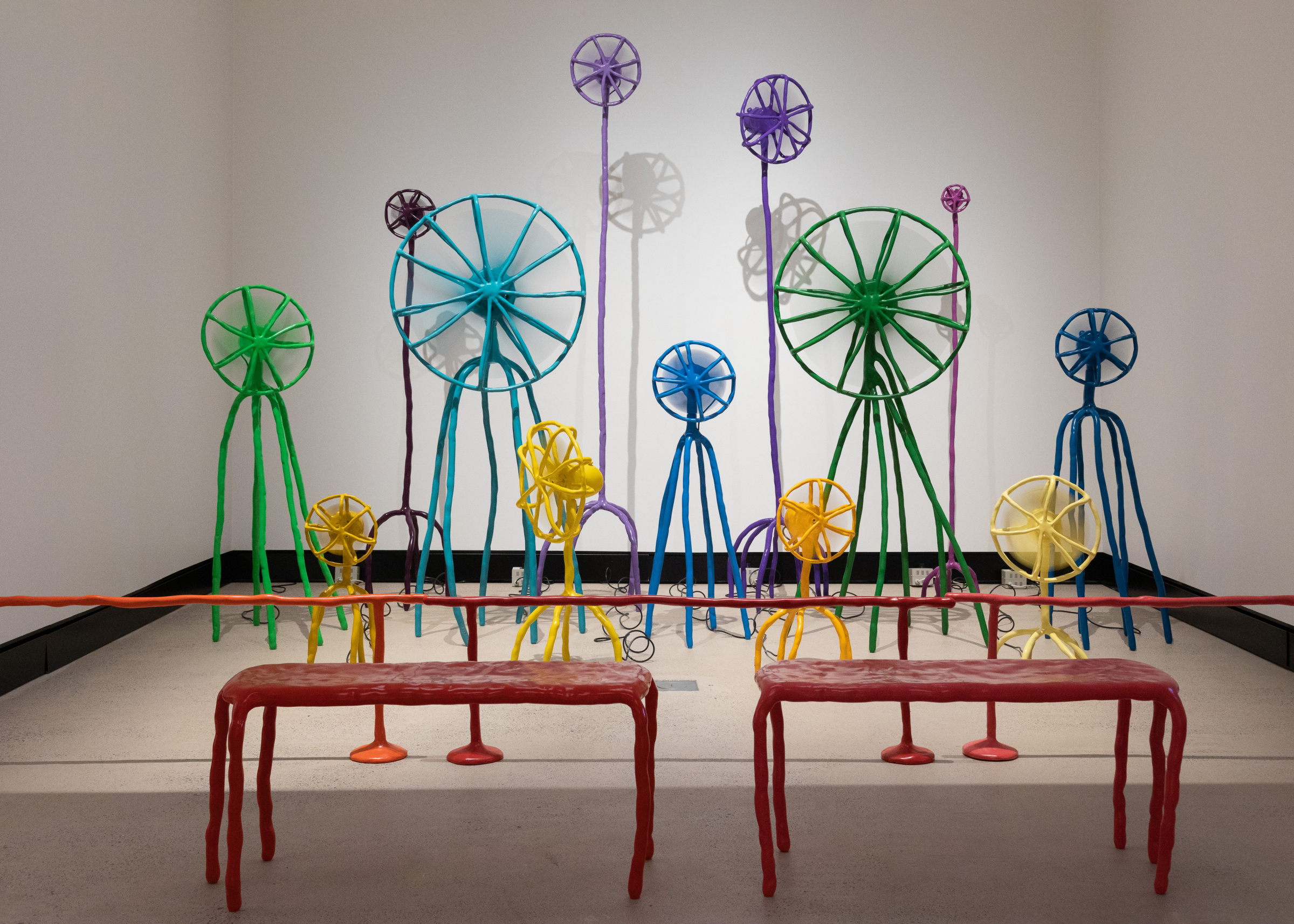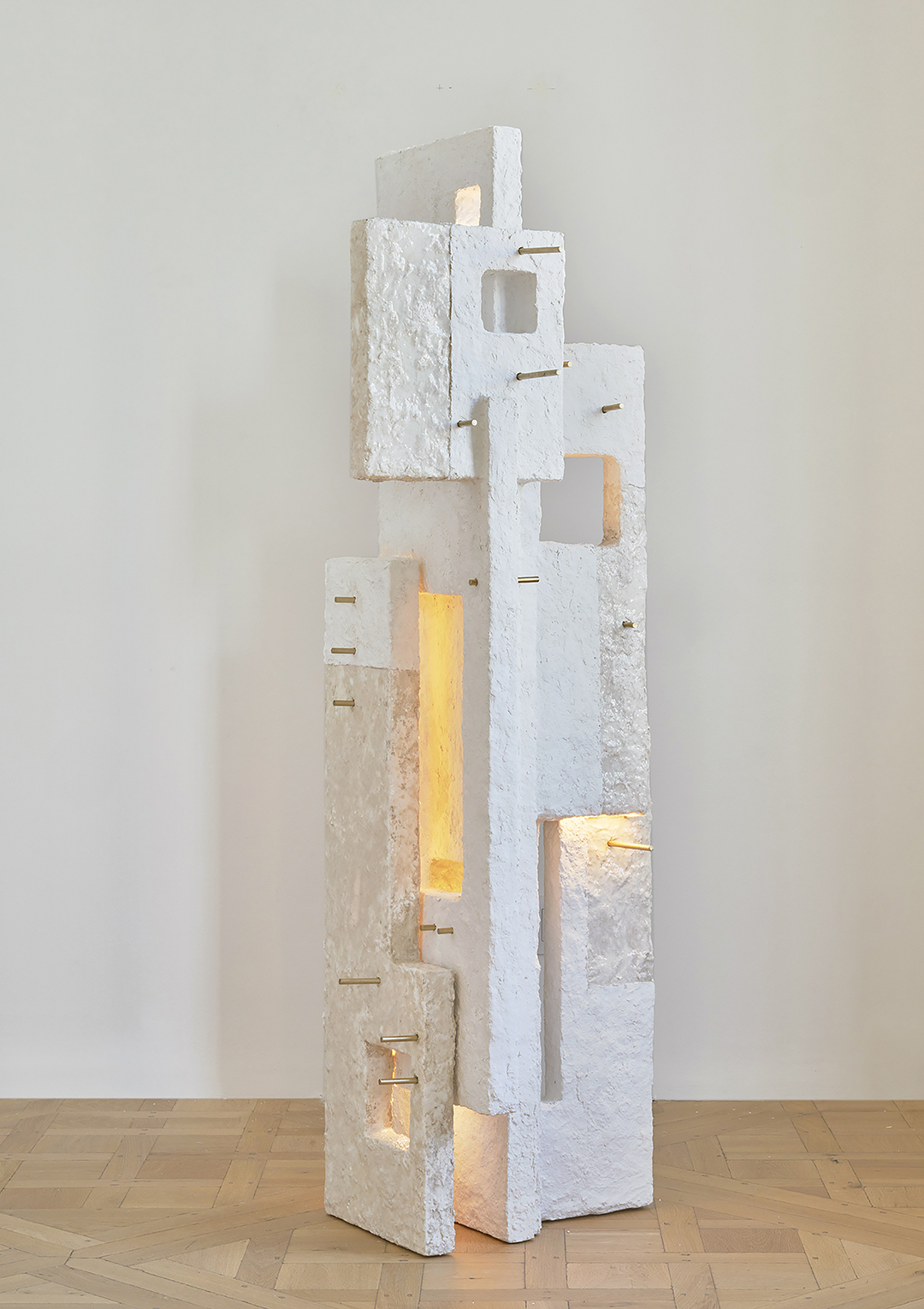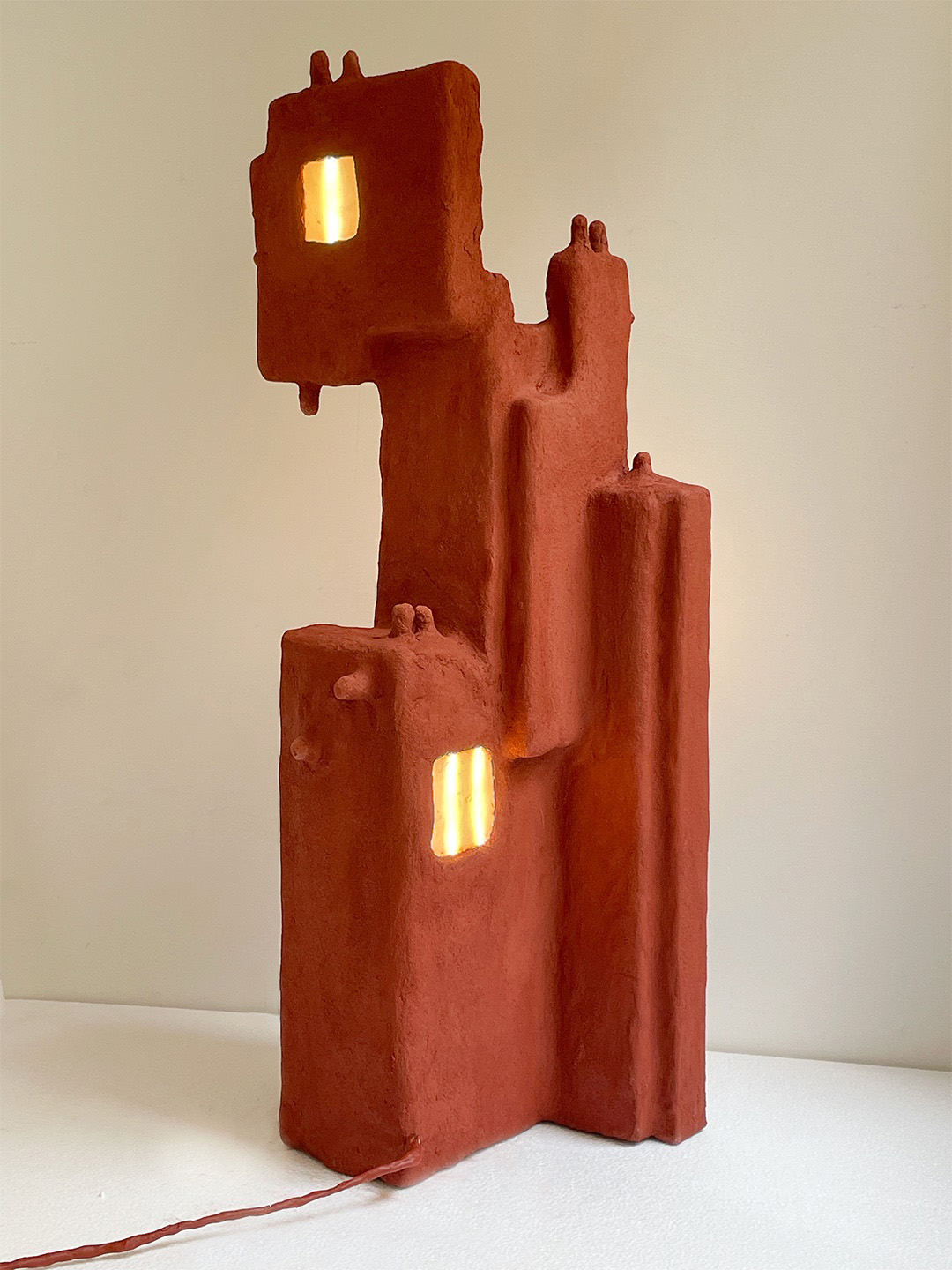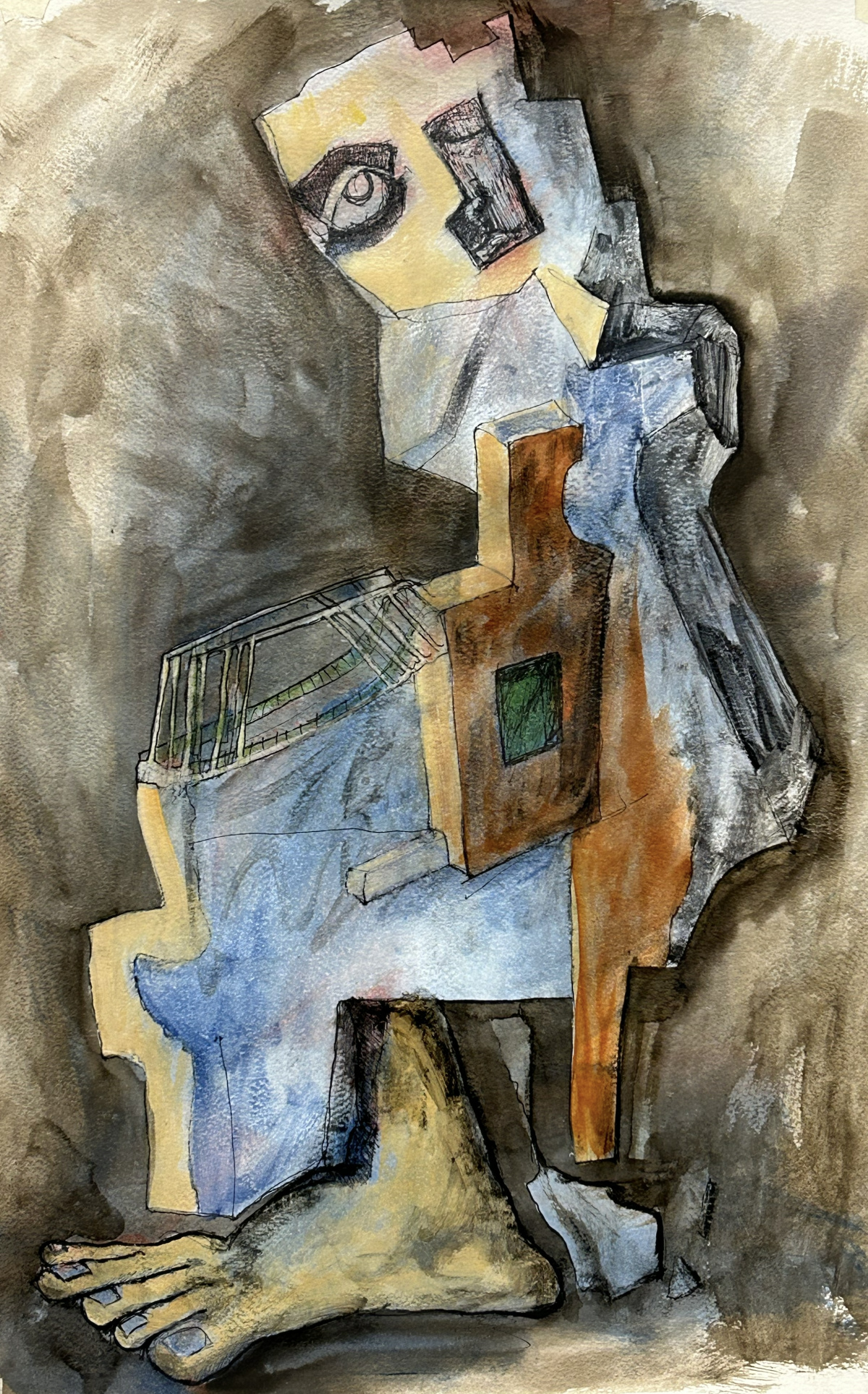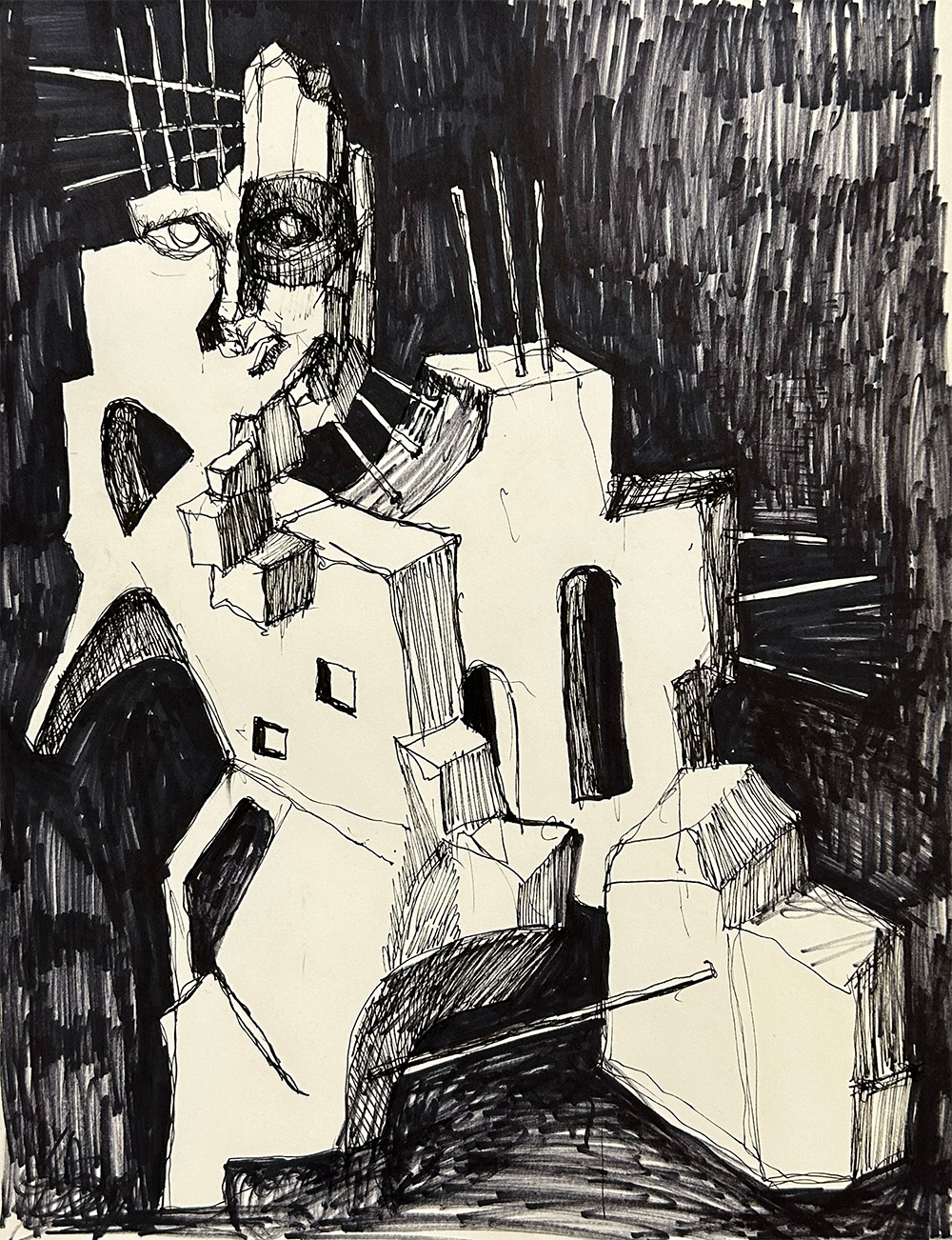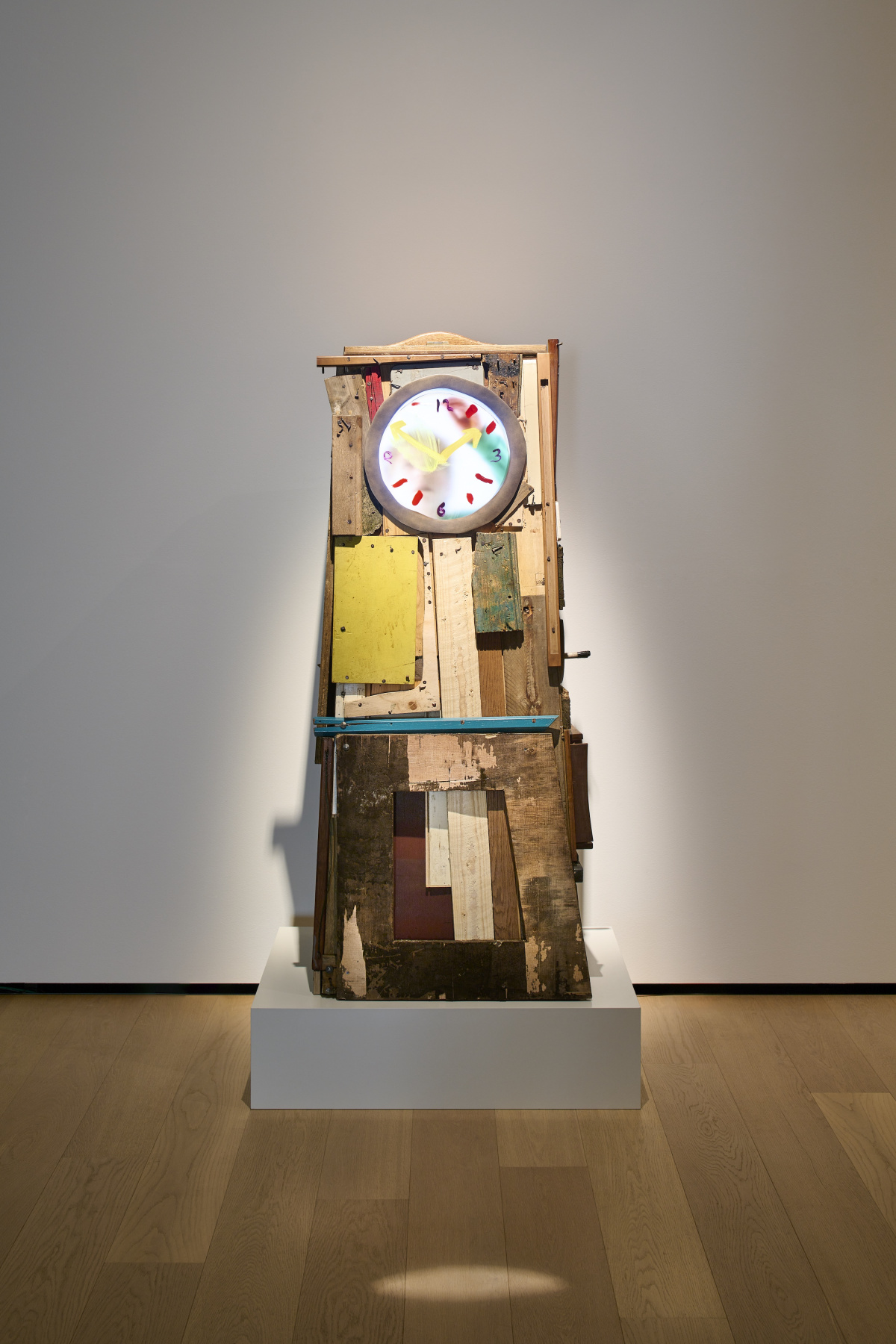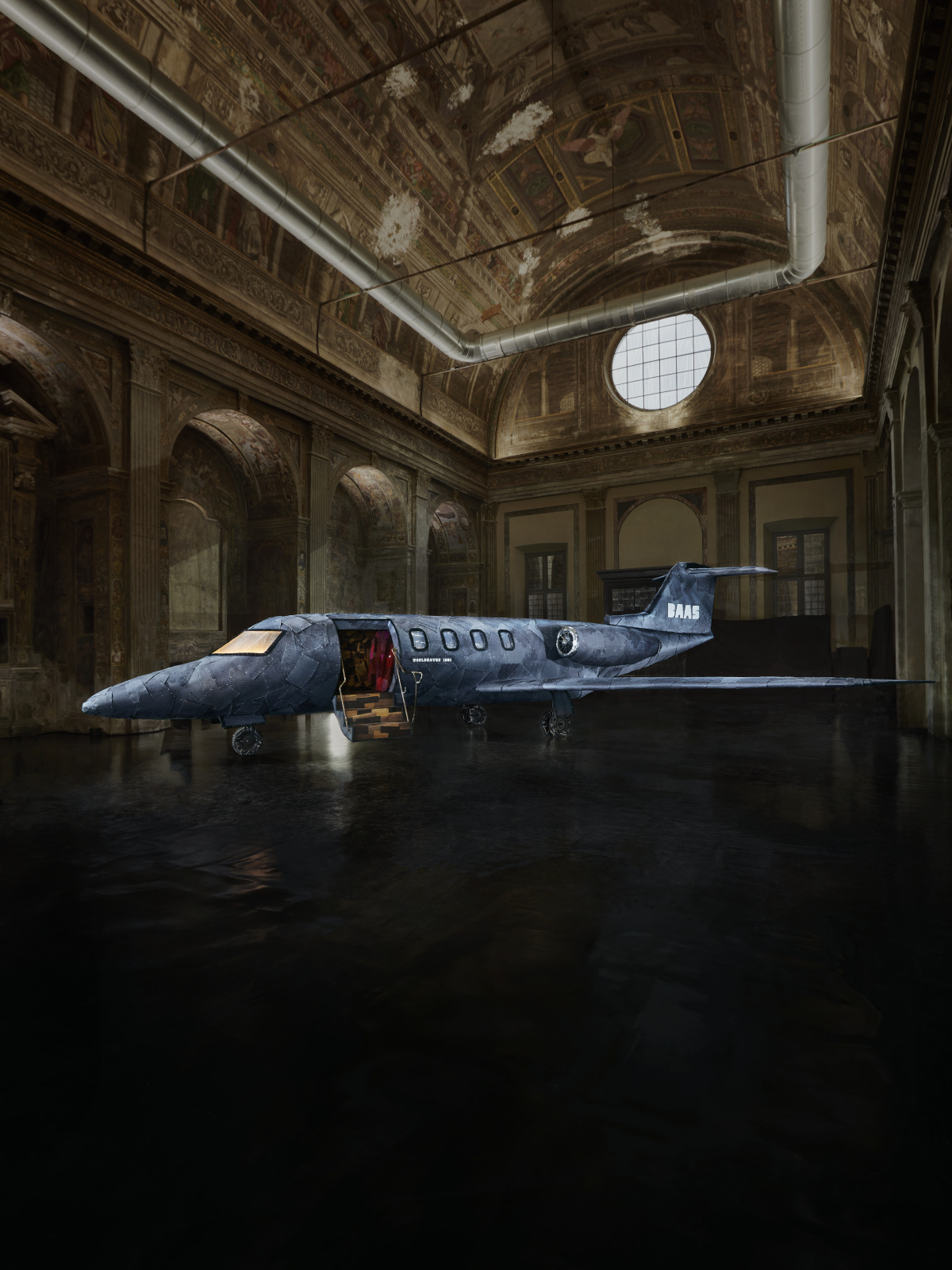Maarten Baas is a Dutch artist known for his approach to design, blending craftsmanship with conceptual art. His work often challenges traditional notions of time, functionality, and aesthetics, resulting in pieces that are both whimsical and thought-provoking. He’s collaborated with various brands, including Louis Vuitton, Hermès, Dom Ruinart, and Dior. His works also appear in the private collections of actor Brad Pitt and gallerist Adam Lindemann.
Maryam Turkey is an Iraqi-American artist and designer based in Brooklyn. In 2023 she received the For Freedoms annual fellowship, recognizing her commitment to using art as a tool for social change. As part of her Socrates Annual Fellowship in the same year she unveiled a public sculpture at the Socrates Sculpture Park. Most recently Maryam was awarded the 2024 Vilcek Prize for Creative Promise, recognizing immigrants who have shown early career excellence in the United States.
Here the two designers meet for the first time to discuss their work.
—Gianna Annunzio
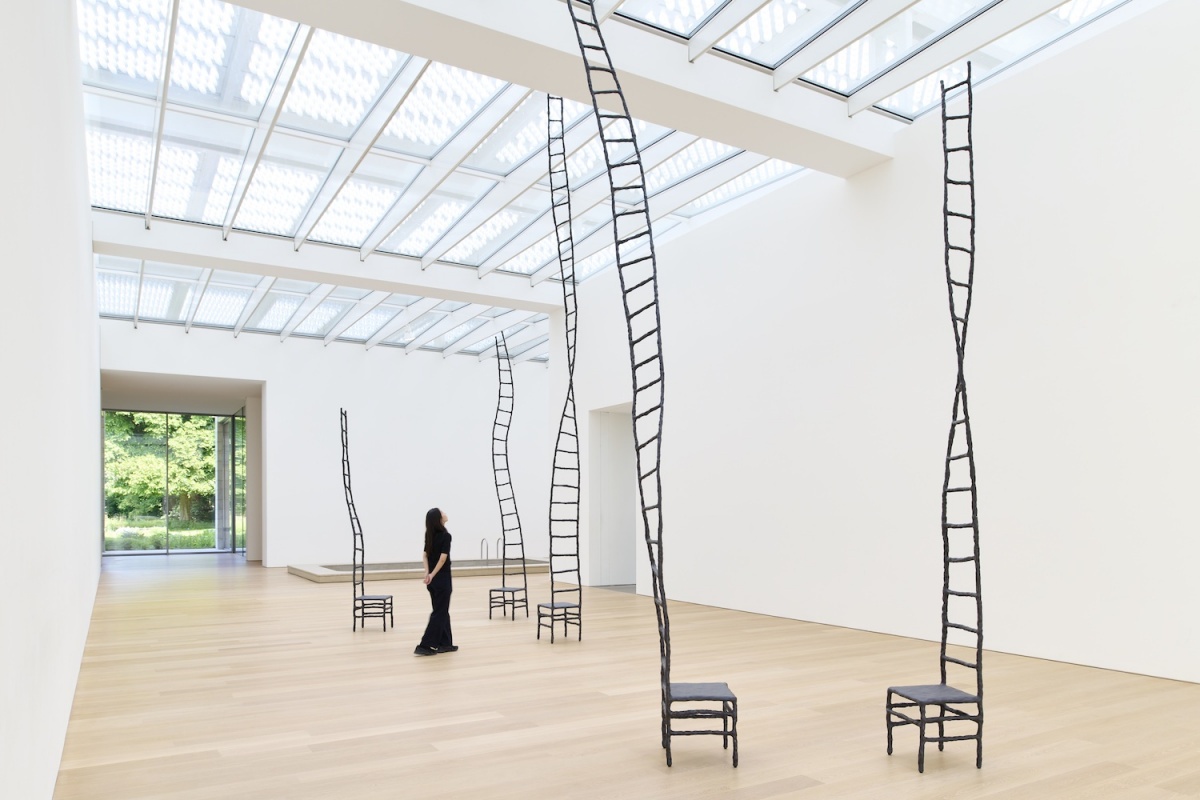
The “Empty Chair” installation at Museum Voorlinden, part of Maarten’s solo exhibition “It’s About Time.” Photo by Antoine van Kaam
Maarten Baas: I think I first came across your work on social media. I liked the projects I saw, and it kept on intriguing me. There’s a unique shape-language and versatility in your work, which I feel is within the same family as some of my own. There’s a similarity, which always appeals to me.
I wish I could have come up with some of your ideas because they’re better than I could have imagined. The more I learned about you, the more surprised I became about the layers added to your practice—the two-dimensional work and, eventually, the music. It all became a complete picture, and I like that very much. It has a very autonomous and authentic feel to it.
Maryam Turkey: I’m so honored you wanted to chat with me, and to hear these words. You’ve always been my inspiration. I studied you in college and in production methods class. The moment my eyes landed on your work, it brought me back to my childhood and working with clay.
It’s nice to know the admiration goes both ways. You live in New York, right?
I grew up in Iraq, but now I’m based in New York. Right now I’m in Leros, Greece, working on a residency and project for a gallery in Istanbul. I eventually came to a point where I could either make work that would sell or take on projects where I could experiment and be freer.
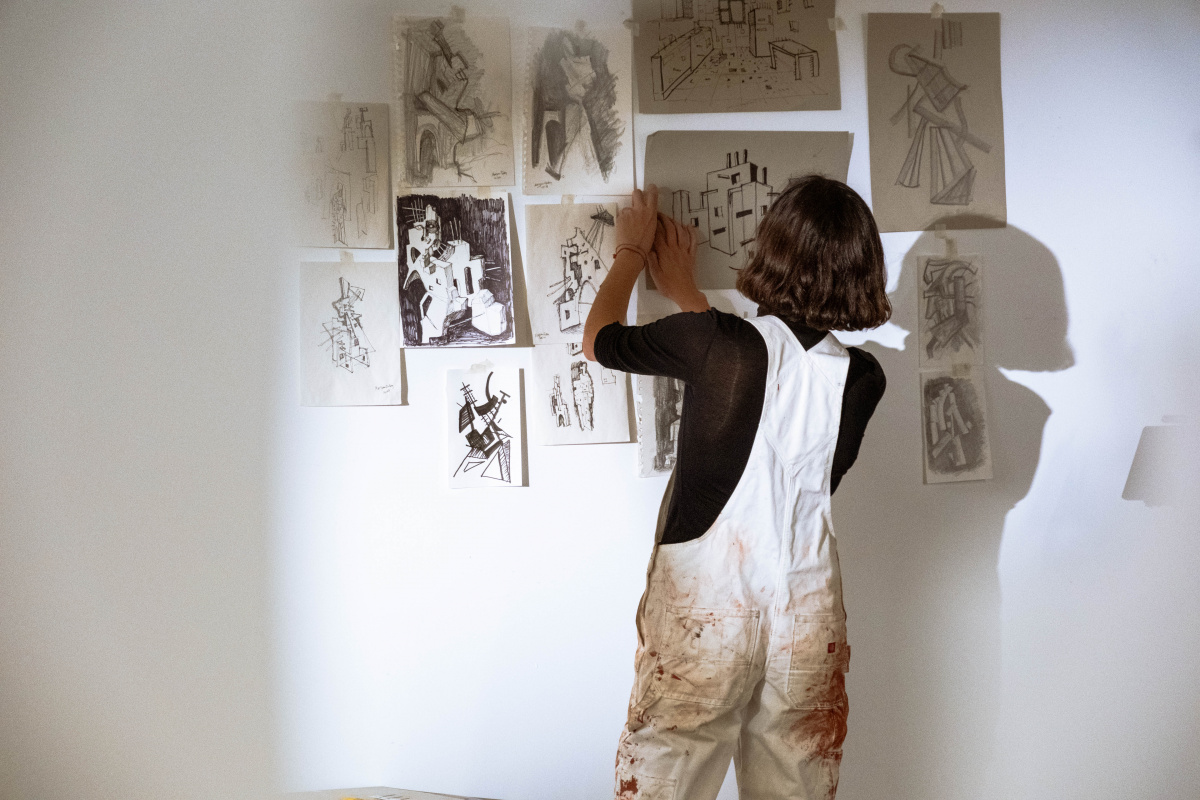
“When I first came to the US I was too afraid to be an artist,” Maryam says. “When I first saw your work I realized there was a way I could do both.” Courtesy of Maryam Turkey
Experimenting is always a vulnerable, personal process. At the same time you seem to have ambitions—you’re also an entrepreneur who has her own business. You build this dreamy, experimental world where you’re trying new things and have a down-to-earth side where you need to be professional.
I know what it takes to make public work alongside professional exhibitions. It’s very hard to do that. How do you combine those two worlds?
It’s not easy, but my goal has always been to chase freedom. A child usually has some sort of freedom, playing outside and having a childhood experience. My childhood was extremely oppressive, especially as a girl. I was also living during a war, so I was stuck inside a lot.
When I first came to the US I was too afraid to be an artist. I ended up studying industrial design instead so I could get a job and pay my student loans. You were one of the rare inspirations I looked up to who did both design and art. When I first saw your work I realized there was a way I could do both.
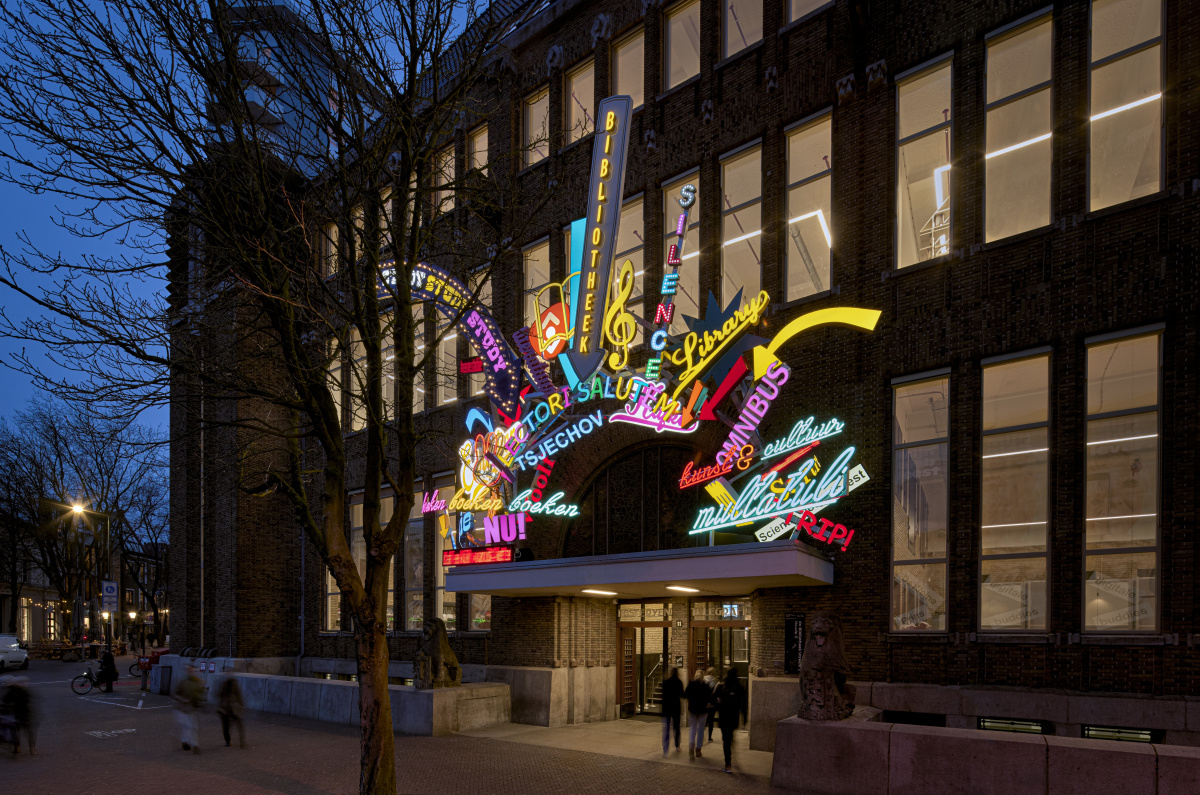
“Intellectual Heritage” by Maartan Baas for the Utrecht Public Library in the Netherlands. Photo by Maarten Noordijk
I’m constantly asking myself the question, “How can I be free?” That’s the main goal I’m after. Having financial stability is a way of freedom. It’s a constant battle of trying to balance practicality and a world where I can be completely free and in touch with my inner child.
I’m in a city where there’s a lot of opportunity and resources. When you don’t have any of that, and then suddenly you have that, you see a playground of opportunities. For a long time I thought my dream was to have a gallery so I could be financially safe. But the more I worked with galleries the more I felt there were very few that remain true to the artist.
A gallery often forces you to have a recognizable style. They want you to be reliable in what you’re doing. But for an artist who wants to jump around from one thing to the other, it’s not easy to pinpoint. The energy should be trusted rather than the framework.
I agree. I’m living off grants, prize funding, and scholarships. It’s terrifying not to follow a path that someone else builds for you. But following my intuition is the right thing to do, and the universe always surprises me with rewards I never thought could exist. Being true to my inner self is a reward.
- In her “Between Rise and Fall” collection, Maryam constructs a hybrid, imagined cityscape inspired by memories of two metropolises that shaped her life. Courtesy of Maryam Turkey
- In her “Shelter” series, Maryam explores the idea of shelter as protection from an outside masculine world. “It’s about the relationship between inside and outside and who rules which world,” she says. Above, “Shelter 1,” courtesy of Maryam Turkey
Recently I started reading this book by Rick Rubin, The Creative Act: A Way of Being. I recommend it. I want to read you an excerpt. I’d love to know if you can relate to it or elaborate on it:
Our thoughts, feelings, processes, and unconscious beliefs have an energy that is hidden in the work. This unseen, unmeasurable force gives each piece its magnetism. A completed project is only made up of our intention and our experiments around it. Remove intention and all that’s left is the ornamental shell. Though the artist may have a number of goals and motivations, there is only one intention. This is the grand gesture of the work. It is not an exercise of thought, a goal to be set, or a means of commodification. It is a truth that lives inside you. Through your living it, that truth becomes embedded in the work. If the work doesn’t represent who you are and what you’re living, how can it hold an energetic charge? (Penguin Press, 2023.)
Excerpt from THE CREATIVE ACT, published by Penguin Press, an imprint of Penguin Random House LLC. Copyright © 2023 by Rick Rubin
When I read that it validated this feeling I’m going after. I really believe our inner being is a ball of energy. The mediums we have—be it sculpture, design, music, dance—are mediums to use as tools of expression. I know you’ve said, “Having a style is like being in jail,” but I want to elaborate on that. Having one medium is also like being in jail. You can have one medium, follow one path, and spend your whole life crafting this beautiful, incredible, useful thing. But I really believe we are more than that.

“Real Time XL: The Artist” features a life-sized video performance of Maarten working as if from inside the clock itself, continually drawing and redrawing the correct time. Photo by Jean-Pierre Vaillancourt
It’s a beautiful text. The quote you gave me credit for is actually by Anthon Beeke, who is a graphic designer in the Netherlands, but I totally agree with that idea of being in jail. Sometimes I wish I could focus on one material and do a little less in every other scope. Though that’s not so practical, because if you’re not making money, then it’s not the most efficient way.
I feel the text is saying art is in your DNA. Whatever your DNA produces is automatically what you are and what you represent. It will always somehow take on your style or signature.
It’s important to stay true to that intuition and voice inside that leads that way. I find it more and more difficult the older I get, or the more responsibilities I have. That cliché of childhood that is free-spirited. When you get older you lose a bit of that spontaneity. And of course that’s the subject of my work, and I challenge that.
“Whatever your DNA produces is automatically what you are and what you represent. It will always somehow take on your style or signature.”
When I chose design I chose it based on the fear of not making it as an artist. The type of stuff I did early on you can tell I was trying to fit in or be a designer. I wasn’t satisfied with the work and had an existential crisis. That’s when I decided to do this residency—to make art and not expect anything out of it.
My industrial design practice taught me to be a sculptor because I’m supposed to understand materials. I remember when we were in college, we would go to the sculpture department and make fun of their craftsmanship because they didn’t have the resources we did as industrial designers.
It’s funny how people like to categorize what this is and give it one name, but it’s much more complex and beautiful than that. Every creation we do, even though it doesn’t make sense in the moment, might carry on and help this other creation tomorrow.
When I started focusing on art I had an art residency at the World Trade Center during the pandemic. At that time I also had a full-time design job. Afterward I would spend my time on my art.
- “Some of my best sketches happen when I’m on the subway or waiting somewhere and not wanting to be on my phone,” Maryam says. “I have my sketchbook with me and just start drawing without thinking about what it’ll be.” Above, “Untitled 7” by Maryam Turkey
- “The best ideas come when you’re not trying to do anything specific,” Maryam says. Above, “Untitled 6” by Maryam Turkey
With the pandemic many designers I knew weren’t creating anything. But I had a studio in a skyscraper and plenty of time, so I threw myself into my art every day without any specific goal in mind. The outcome was more satisfying than any design work I had done before.
That reminds me of a video I saw of Frank Zappa, the musician. He said that when he plays guitar, he doesn’t play it like most guitarists. Most guitarists have a riff, and they play it exactly as it should be, hitting every note the correct way.
He said that he has the skills to play the guitar, but he focuses on capturing the moment with his skills. He channels his energy into the guitar, using his technique to perform in that specific moment, rather than just technically repeating what he already knows.
- “A gallery often forces you to have a recognizable style,” Maarten says. “They want you to be reliable in what you’re doing. But for an artist who wants to jump around from one thing to the other, it’s not easy to pinpoint.” Above, Maarten Baas, “Grandfather Clock The Son,” Voorlinden, “It’s About Time.” Photo by Antoine van Kaam
- G-Star x Maarten Baas, “The Denim Private Jet,” 2023. Photo by Ronald Smits
In music it’s so obvious to me how it works. I realized my love for music when I started living in New York because the scene is huge. You can walk into a bar and see amazing musicians playing.
One moment that blew my mind was watching musicians perform and then learning they hadn’t rehearsed at all. It was an improv session—they were making it up on the spot, yet they had this synergy with each other. That inspired me to trust in the feeling that will come and not over-plan or overthink what I’m doing.
I have a project in Portugal with a friend where we purchased a large plot of land. We plan to develop it into spaces for artists in residence, workshops, tiny houses, and greenhouses. The land spans 13 hectares, so we refer to it as our 13-hectare playground. You should come to Portugal to build something there.
That would be an honor! Do you have things built in it already?
Not yet. We just bought it two years ago and are still working on the on the basics. The land has a few ruins on it. It’s a huge project—just having the basic infrastructure takes a lot of time.
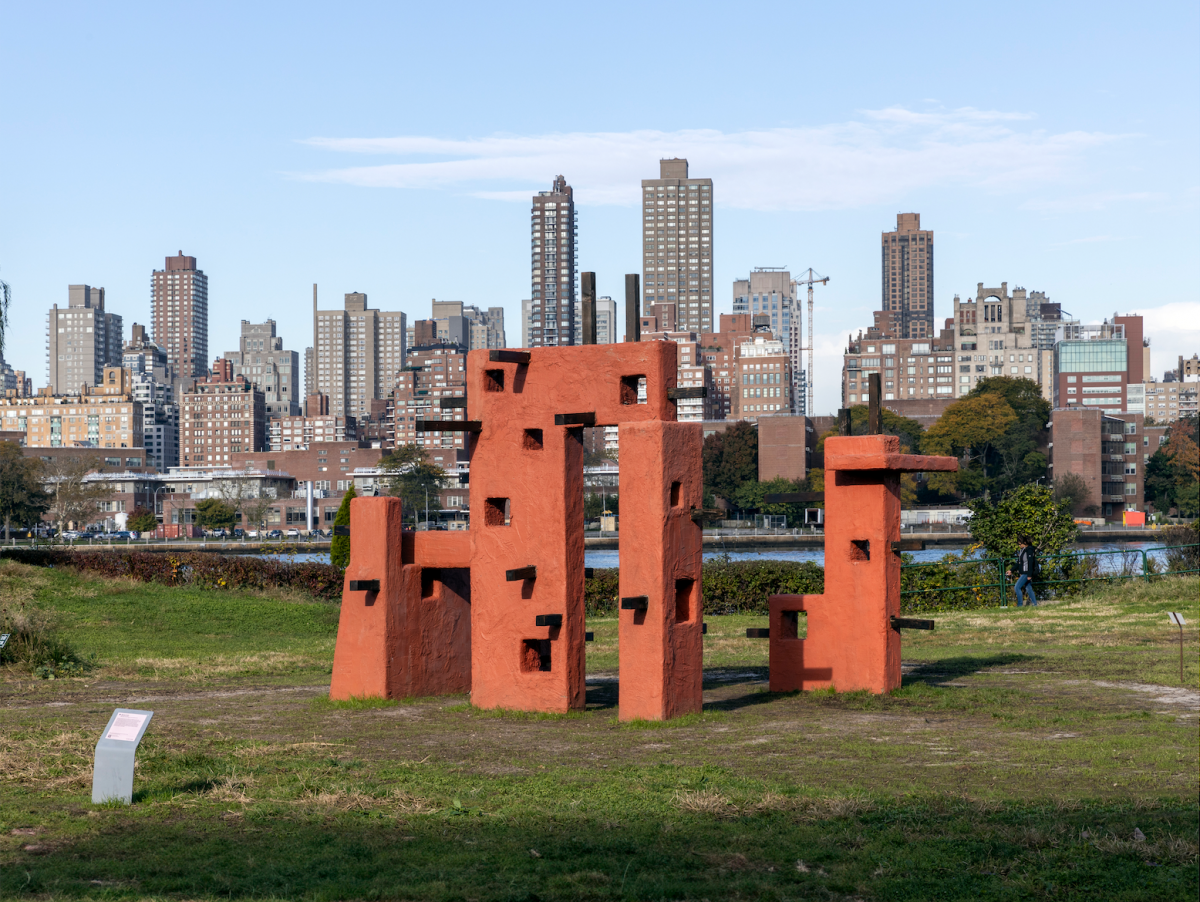
Drawing inspiration from her childhood in Baghdad, where mud structures bore the imprint of human touch, “Deconstructed” echoes textures that fascinated Maryam as a child. Courtesy of Maryam Turkey
The rocks on the island here sort of look like ruins. They’re hundreds of years old in different shapes and sizes, and they have wrinkles that make them resemble super old, wrinkled people. They almost look like body parts that exploded. They have so much energy, so I collected them because I want to be true to the location and find a way to incorporate these stones into my work.
There are also lots of cats here, so my designs might include benches that double as houses for cats, where people can sit, pet, and feed them. I’ve noticed that cats here gravitate toward the shade since it’s very sunny. When I had these ideas I realized my designs should be true to where I am, solving problems and connecting dots in the moment.
I don’t know how I come up with my design ideas. Usually either I have an idea or I don’t. The word inspiration literally means “spirit,” to find spirit for something and transfer an energy.
I feel inspired by energy and people. Interestingly, people sometimes ask how I got inspired to make my project “Real Time.” The answer is that I saw the cheesiest commercial advertisement while waiting for my luggage at the airport.
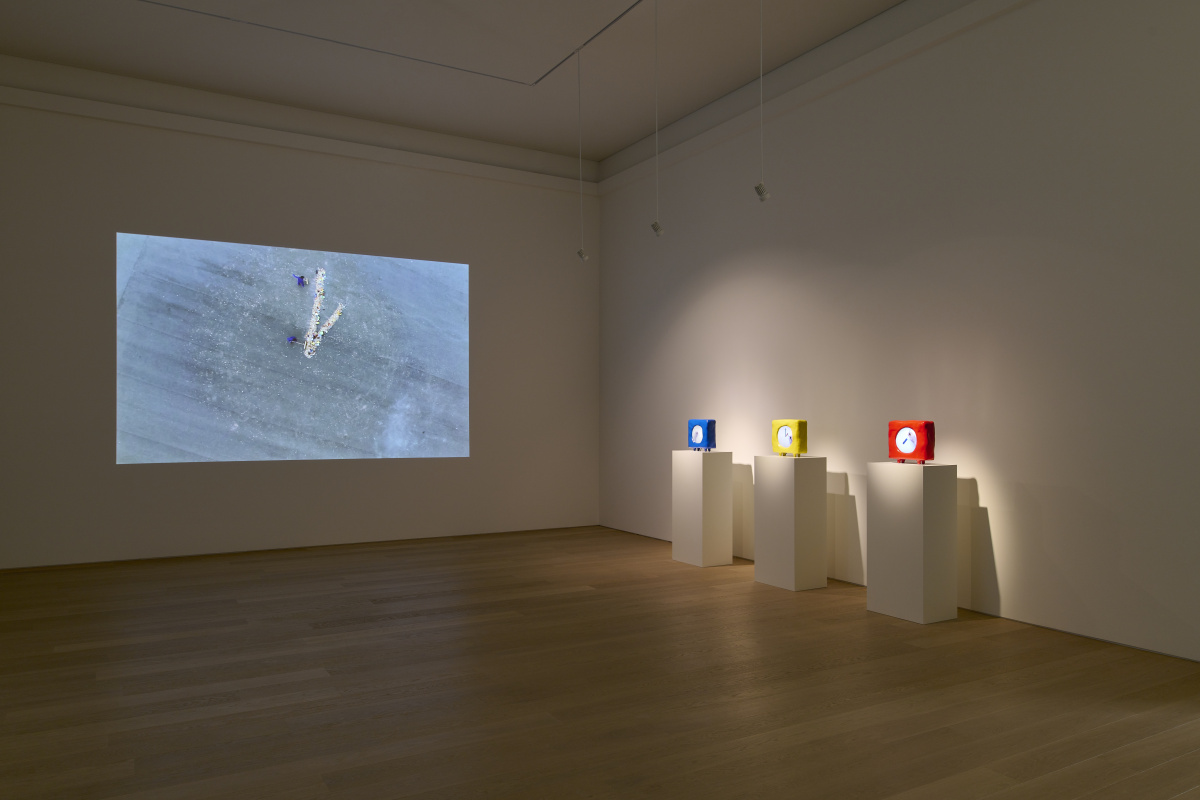
“People sometimes ask how I got inspired to make my project Real Time,” Maarten says. “The answer is that I saw the cheesiest commercial advertisement while waiting for my luggage at the airport.” Above, Maarten Baas, “Sweepers Clock” and “720 Children Clock” installation view, Voorlinden, “It’s About Time.” Photo by Antoine van Kaam
I was looking at the screens, saw a bad advertisement, and my mind drifted. That’s when I came up with the idea of making a video with a clock. Even cheesy things can be inspirational in the end.
You were in a state of being, not thinking. I think inspiration is about not forcing something, just allowing yourself to “be,” and maybe even embracing a bit of boredom.
Maybe our job is to allow ourselves to be bored sometimes. Some of my best sketches happen when I’m on the subway or waiting somewhere and not wanting to be on my phone. I have my sketchbook with me and just start drawing without thinking about what it’ll be. The best ideas come when you’re not trying to do anything specific.
A version of this article originally appeared in Sixtysix Issue 12.
